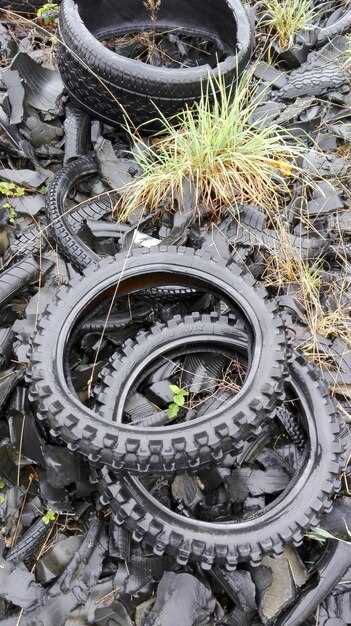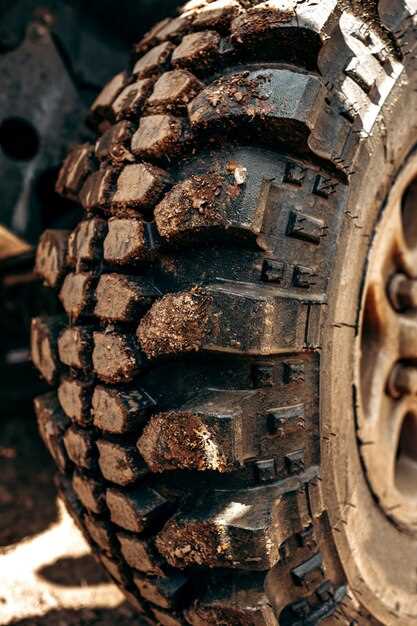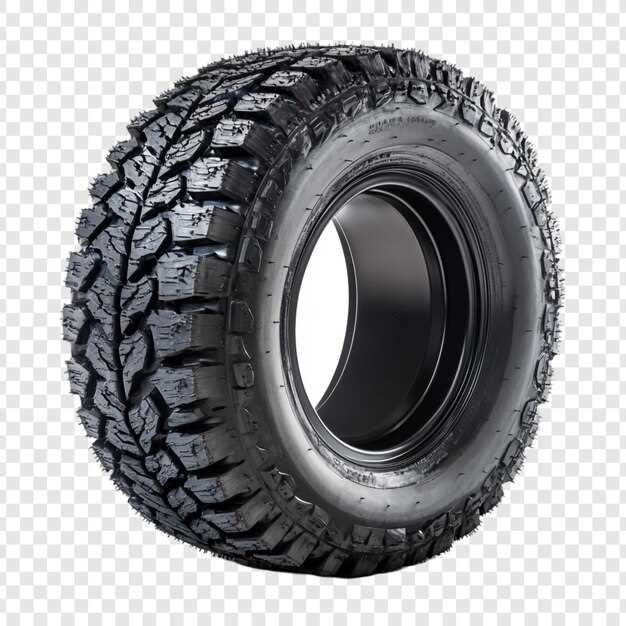
When it comes to tackling the rugged terrains of off-road adventures, choosing the right wheels is crucial for maximizing performance and safety. Among the popular options are beadlock and traditional wheels, each offering distinct advantages and disadvantages that can significantly impact your experience on challenging trails. Understanding these differences can help enthusiasts make informed decisions tailored to their specific needs.
Beadlock wheels are designed to secure the tire bead tightly against the wheel itself. This innovative design prevents tire slippage during extreme maneuvers on loose or uneven surfaces. Off-road tires often require lower air pressure for improved traction, and beadlock wheels enable drivers to run their tires at lower pressures without the risk of dismounting, providing a significant edge in challenging conditions.
On the other hand, traditional wheels offer a different approach, emphasizing simplicity and weight savings. While they might not provide the same level of bead retention as their beadlock counterparts, they are often lighter and more cost-effective, making them an appealing choice for casual off-roaders. However, traditional wheels may require closer monitoring and maintenance, especially when operating under lower tire pressures in off-road situations.
Ultimately, the choice between beadlock and traditional wheels hinges on the type of off-road adventures you intend to pursue. Whether you’re scaling rocky paths or navigating sandy dunes, understanding the nuances between these two wheel types will empower you to enhance your off-road experience to its fullest potential.
Understanding Beadlock Wheels: Mechanism and Benefits
Beadlock wheels are specialized components designed for off-road adventures, ensuring that tires maintain their position under extreme conditions. The primary mechanism of a beadlock wheel involves a two-piece construction that secures the tire bead to the wheel. This is achieved through an outer ring that compresses the tire bead against the wheel surface, creating a tight seal.
One of the most significant benefits of using beadlock wheels is their ability to prevent tire slippage, especially when the vehicle is operating at lower air pressures. Off-road enthusiasts often reduce tire pressure to increase traction on rough terrain; however, this can sometimes cause traditional tires to unseat from the wheel. Beadlock designs eliminate this risk, providing confidence during challenging maneuvers.
Additionally, beadlock wheels enhance the overall performance of off-road tires by improving grip and stability. The solid retention of the tire bead allows for better control when navigating through obstacles like rocks, mud, or sand. This feature becomes crucial for off-road driving, where unpredictable surfaces can drastically affect vehicle handling.
Moreover, beadlock wheels enable drivers to adjust tire pressure without fear of losing the tire’s fit. This adaptability allows for optimal performance across varying terrains, enhancing the driving experience. In summary, beadlock wheels offer significant advantages in off-road scenarios by ensuring tire security, improving performance, and allowing flexibility in tire pressure management.
Traditional Wheels: Advantages and Limitations for Off-Roading
Traditional wheels are a popular choice for off-roading, mainly due to their design and compatibility with various tire types. One significant advantage of these wheels is their weight. Generally lighter than beadlock wheels, traditional wheels can improve vehicle performance by enhancing acceleration and maneuverability on rough terrains.
Another advantage is their cost-effectiveness. Traditional wheels tend to be less expensive, making them accessible for many off-road enthusiasts. This affordability allows users to invest in high-quality tires, which are essential for maximizing traction and stability in off-road conditions.
However, traditional wheels also come with limitations. A primary concern is their inability to securely hold tires at low pressures. When venturing off-road, many drivers prefer to deflate their tires to increase surface area and improve grip. Traditional wheels lack the beadlock feature that prevents tires from coming off the rim during extreme conditions, heightening the risk of losing control.
Additonally, traditional wheels may not be as durable as beadlock options when subjected to harsh environments. Off-road adventures often involve rugged trails, rocks, and uneven surfaces that can cause damage to wheels. This vulnerability can lead to bent or cracked rims, which can hinder performance and necessitate costly repairs or replacements.
In summary, while traditional wheels offer advantages in terms of weight and cost for off-roading enthusiasts, they come with notable limitations regarding tire retention and durability. Choosing the right wheels depends on individual needs and the specific challenges faced in off-road conditions.
Comparative Analysis of Off-Road Tire Performance on Beadlock Wheels
When tackling challenging terrains, the choice of wheels is crucial for optimizing off-road tire performance. Beadlock wheels stand out due to their unique design, which securely locks the tire bead to the wheel. This feature provides several advantages over traditional wheels, particularly in demanding conditions.
Traction: Off-road tires mounted on beadlock wheels can maintain optimal traction at lower air pressures. Lower pressure increases the tire’s footprint, enhancing surface contact, which is essential for navigating rocky or muddy landscapes. Traditional wheels may suffer air loss in such scenarios, leading to reduced grip.
Stability: Beadlock wheels offer unmatched stability during sharp turns and navigational maneuvers. The locking mechanism ensures that the tire does not detach from the wheel, minimizing the risk of tire rollover while traversing uneven surfaces. In contrast, traditional wheels do not provide this level of security, potentially compromising stability.
Tire Longevity: Off-road tires on beadlock wheels experience less damage from impacts with rocks and other obstacles. The ability to run lower pressures reduces the risk of pinch flats, a common issue with traditional setups. This feature enhances the overall lifespan of the tires, making beadlock options more cost-effective in the long run.
Handling: The handling characteristics of off-road vehicles equipped with beadlock wheels are often superior. The secure fit of the tire allows for better handling under acceleration and braking, contributing to a more controlled driving experience. While traditional wheels offer reasonable handling, they cannot match the performance gains achieved with beadlock systems.
Conclusion: Ultimately, off-road tire performance is significantly enhanced when utilizing beadlock wheels. The advantages associated with traction, stability, longevity, and handling make beadlock wheels a preferred choice for serious off-road enthusiasts. While traditional wheels may suffice for casual users, those seeking maximum performance in extreme conditions will benefit from the robust capabilities of beadlock setups.
Installation Process and Maintenance Tips for Beadlock Wheels
Installing beadlock wheels is essential for ensuring optimal performance during off-road adventures. Below is a detailed guide to the installation process, followed by essential maintenance tips.
Installation Process
- Preparation: Gather all necessary tools, including a torque wrench, tire mounting machine, and a repair kit for any potential tire issues.
- Wheel and Tire Selection: Choose appropriate off-road tires that fit the beadlock wheels specifications. Ensure that the tire’s bead seats perfectly within the beadlock rim.
- Mounting the Tire:
- Place the tire on the wheel and align the tire bead with the rim’s beadlock feature.
- Use a tire mounting machine to push the tire bead into the beadlock groove.
- Securing the Beadlock Ring:
- Position the beadlock ring on top of the tire bead and the wheel.
- Insert the provided bolts and tighten them hand-tight initially.
- Torque Specifications: Using a torque wrench, tighten the bolts to the manufacturer’s specified torque settings, ensuring even distribution of pressure.
- Final Checks: Inspect the installation visually to ensure there are no gaps or irregularities between the tire, beadlock ring, and wheel.
Maintenance Tips

Regular maintenance is crucial for the longevity and performance of beadlock wheels.
- Regular Inspection: Check the beadlock bolts periodically to ensure they are securely fastened. Inspect for any signs of wear or damage.
- Tire Pressure Monitoring: Maintain the correct tire pressure. Under-inflation can lead to tire bead separation, while over-inflation can stress the wheel.
- Cleaning: Clean the beadlock area and bolts regularly to prevent dirt build-up, which can cause corrosion and hinder performance.
- Re-torquing: After a few off-road trips, re-torque the beadlock bolts to maintain proper tension and ensure safety.
- Storage: If not in use, store beadlock wheels in a dry, cool place to prevent rubber degradation and maintain structural integrity.
Following these installation steps and maintenance practices will help ensure your beadlock wheels perform optimally during your off-road adventures.
Cost Considerations: Beadlock vs Traditional Wheels

When evaluating options for off-road adventures, the cost differences between beadlock and traditional wheels play a significant role. Below are key aspects to consider regarding the financial implications of each type.
- Initial Purchase Price:
Beadlock wheels generally come with a higher initial cost compared to traditional wheels. This is due to their complex design and the materials required to ensure durability and performance in extreme conditions.
- Maintenance Costs:
Traditional wheels often require less maintenance, while beadlock wheels might need frequent inspections to ensure the integrity of the locking mechanism and seals. This can lead to additional expenses over time.
- Tire Replacement:
Beadlock wheels allow for lower tire pressure, which can extend tire life in off-road conditions. Reduced wear can offset the higher upfront investment. In contrast, traditional wheels may wear out more quickly under severe off-road circumstances.
- Installation and Modifications:
Beadlock wheels may necessitate specific modifications to your vehicle for proper installation. This could increase upfront costs. Traditional wheels, in many cases, can be fitted to standard vehicles without modifications.
- Resale Value:
While traditional wheels might depreciate faster, beadlock wheels can maintain their value longer due to their specialized nature. If you plan to resell or upgrade your wheels, this aspect may factor into your overall cost consideration.
In conclusion, understanding the financial implications of beadlock and traditional wheels is crucial for any off-road enthusiast. Carefully weighing the initial investment against long-term costs will help in making an informed decision that best suits both your budget and your off-road activities.
Real-World Experiences: User Testimonials and Performance Reviews
Many off-road enthusiasts have shared their experiences with both beadlock and traditional wheels, highlighting the advantages and disadvantages of each type for various terrains and conditions. The user testimonials offer insights into performance, durability, and handling during off-road adventures.
| User | Wheel Type | Experience | Rating |
|---|---|---|---|
| Jake M. | Beadlock | “I took my beadlock wheels on a rocky trail and was amazed at how well they maintained tire pressure. I pushed through tough sections without any loss in grip.” | 5/5 |
| Sarah L. | Traditional | “I’ve used traditional wheels for years. They are lightweight and have performed well in mud. Yet, during my last trip, I faced issues with the tires losing air on steep descents.” | 3/5 |
| Tom R. | Beadlock | “Beadlock wheels gave me the confidence to lower my tire pressure significantly. This made a huge difference in traction on sand dunes.” | 4.5/5 |
| Linda K. | Traditional | “While I appreciate the aesthetics of traditional wheels, they don’t hold up as well under extreme off-road conditions. I often find myself adding air in the middle of a trail.” | 2/5 |
| Mike B. | Beadlock | “The ability to change tires without losing pressure is a game-changer. Beadlocks handle the toughest terrains effortlessly. They have become a staple for my off-road setup.” | 5/5 |
| Emily T. | Traditional | “I love the classic look of traditional wheels. For casual off-roading, they work fine, but I can’t push them too hard without worrying about tire integrity.” | 3.5/5 |
User feedback consistently indicates that beadlock wheels are recommended for serious off-road adventures where terrain can be unpredictable. In contrast, traditional wheels may still appeal to those who prioritize aesthetics and do not venture into extremely rigorous environments. By comparing user experiences, potential buyers can make informed choices tailored to their off-road needs.





